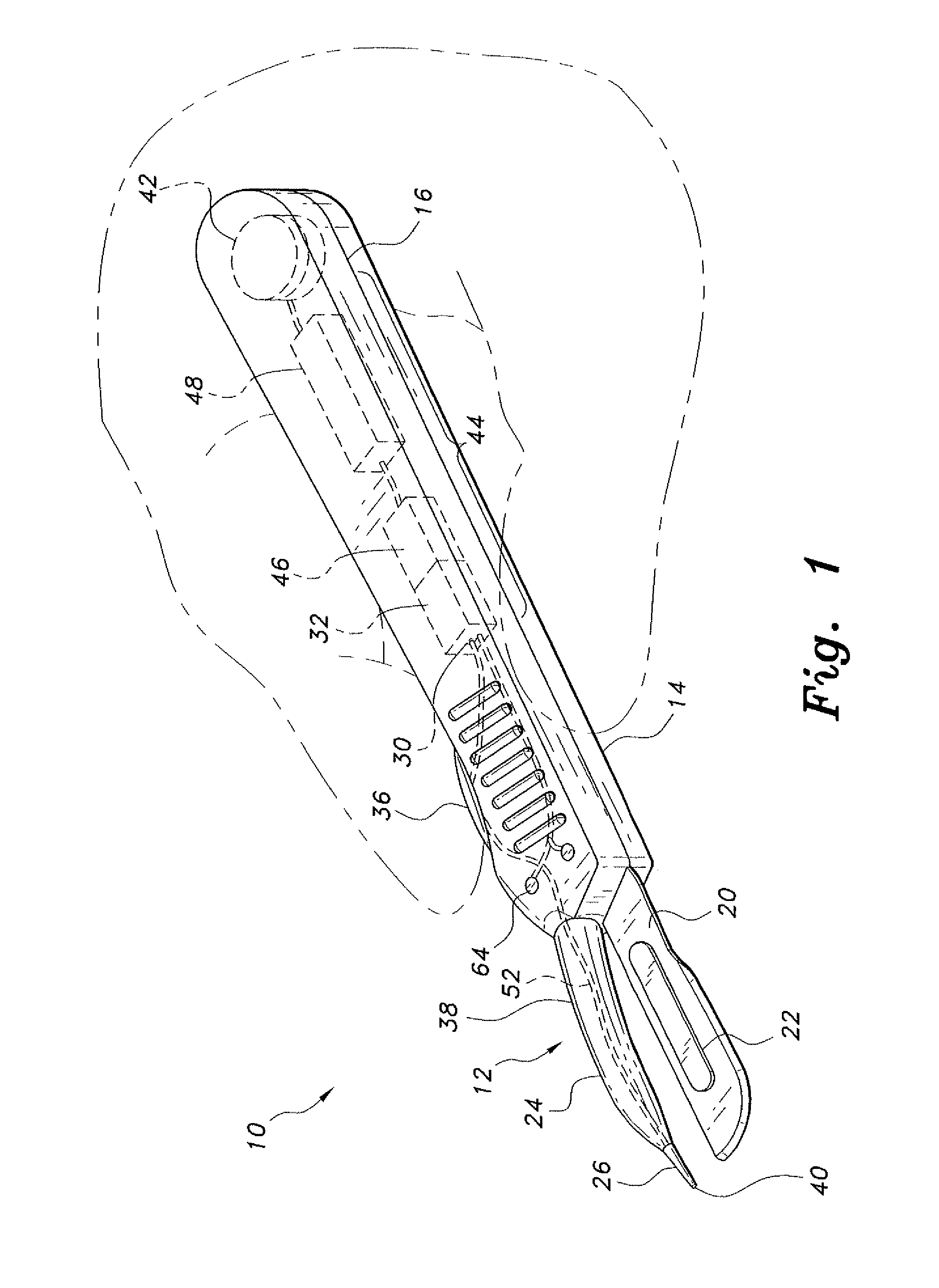Tissue-identifying surgical instrument
a surgical instrument and tissue technology, applied in the field of surgical instruments, can solve the problems of affecting the safety of sensitive tissues in the surgical field, prolonging recovery, and further complications detrimental to the patient's health, and achieve the effect of prolonging us
- Summary
- Abstract
- Description
- Claims
- Application Information
AI Technical Summary
Benefits of technology
Problems solved by technology
Method used
Image
Examples
Embodiment Construction
[0016]The tissue-identifying surgical instrument, generally shown at 10, includes an integrated tissue identification probe, generally shown at 12, with wireless transmission and / or reception capabilities to improve and expedite tissue identification during surgery and thereby substantially reduce surgery time and many potential hazards to the patient during the operation. In a surgical procedure a dissection can require a plurality of different surgical instruments, many of which could be more beneficial to the surgeon if provided with the additional capability of quick and reliable tissue identification as described herein. Provided herein are descriptions of various examples of common surgical instruments that can include, in addition to their primary function, the additional capability of assisting the surgeon in the identification of tissue types encountered during the surgical procedure. The non-limiting examples of these multifunctional surgical instruments 10 described below...
PUM
 Login to View More
Login to View More Abstract
Description
Claims
Application Information
 Login to View More
Login to View More - R&D
- Intellectual Property
- Life Sciences
- Materials
- Tech Scout
- Unparalleled Data Quality
- Higher Quality Content
- 60% Fewer Hallucinations
Browse by: Latest US Patents, China's latest patents, Technical Efficacy Thesaurus, Application Domain, Technology Topic, Popular Technical Reports.
© 2025 PatSnap. All rights reserved.Legal|Privacy policy|Modern Slavery Act Transparency Statement|Sitemap|About US| Contact US: help@patsnap.com



